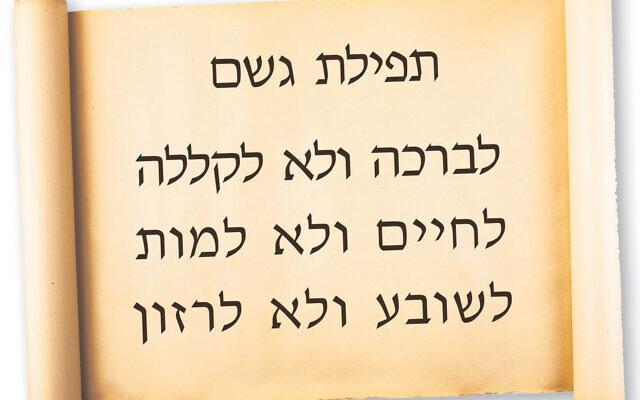The super powers of Shemini Atzeret
How do we represent Shemini Atzeret without using a symbol, like the shofar for Rosh Hashanah or the lulav and etrog for Succot.
In a game of Pictionary, Shemini Atzeret is one of the hardest festivals to guess. All other festivals are associated with a clear symbol or physical ritual. Rosh Hashanah has the shofar. Yom Kippur can be represented by fasting and Succot by the lulav and etrog. For Simchat Torah our go-to is the Torah scroll.
But what about Shemini Atzeret? There is no clear way to symbolise how we celebrate this festival today. Furthermore, in Israel, the day is shared and almost overshadowed by Simchat Torah. How might we represent the essence of Shemini Atzeret?
The festival is referred to several times in the Torah simply as an “atzeret” on the eighth day after the start of Succot. Our Rabbis interpret the term “atzeret” in different ways.
There are those that argue “atzeret” is connected to the Hebrew root A’TZ’R which means to stop or hold back. The Sifrei in Bamidbar (midrash halachah) refers to the physical confinement of pilgrims in Jerusalem for an additional day following the conclusion of Succot. Rashi refers to Hashem’s spiritual restraint of the Jewish people at the end of Succot.
Following a seven-day period of intense closeness, Hashem seeks to “hold us back” with Him for one more day. Rashi highlights midrashim that describe the longing and lingering between loved ones who must take leave of each other. He compares Hashem’s actions to that of a parent asking the adult child who has come to visit to stay “just one more day”. This image may resonate strongly with those of us today who are currently restricted or curtailed from visiting our loved ones.
In contrast, there are others who argue the term Atzeret refers to a special gathering. According to this interpretation, Shemini Atzeret is characterised as an independent festival rather than an adjunct to Succot. The fact the festival falls eight days after the beginning of Succot gives the day its spiritual strength and significance. The Ramban draws from Jewish mysticism to highlight the fundamental importance of the number eight in the Jewish calendar and in Jewish time. The natural world is represented by the number seven. The creation narrative took place over seven days. There are seven days in the week, seven colours in a rainbow and seven musical notes. The number eight symbolises that which sits outside or above nature – the supernatural. The ability to manifest or express the divine in the natural world is the super power of the number eight.
Ramban quoting the midrash explains the world was created in seven days and each day had a partner except for Shabbat. The Jewish people compose the eighth part of creation. It is our partnership with Shabbat that elevates creation.
The same dynamic plays out with the Jewish festivals. We count seven weeks of the Omer after the first day of Pesach. These seven weeks represent the seven days of creation and parallel the seven days of Succot. Shavuot beginning in the eighth week represents the eighth day and is also called “Atzeret” in the Torah. We sanctify this “eighth day” with the giving of the Torah – an event that marks our partnership with Hashem.
The same dynamic underpins the inauguration of spaces dedicated to encountering Hashem. The inauguration of the Mishkan – the portable sanctuary carried in the desert – required a seven-day process of learning, culminating in the dedication of the space by Aaron as the High Priest on the eighth day. In the Book of Kings 1 the celebration of Shemini Atzeret coincides with the conclusion of King Solomon’s dedication of the First Temple.
Regardless of whether one views Shemini Atzeret as an extension of Succot or its own independent festival, at the heart of both these approaches is the mutual yearning for connection between us and Hashem. According to the first interpretation, the additional eighth day of holiness represents Hashem’s plea and our acquiescence to linger a bit longer in each other’s company. The second interpretation sees the eighth day as an opportunity for transcendence.
As COVID-19 ravages our lives as we once knew them, our ability to deeply connect to others and to forge a meaningful relationship with Hashem is being challenged and stretched to the brink. We can look to the lessons that Shemini Atzeret teaches us about the power of connection to draw strength and inspiration into our lives and our interactions with others.
In our family, we are playing a lot of board games in lockdown. So when you next play Jewish Pictionary and you are at a loss for what to draw to symbolise Shemini Atzeret, think of the number 8 as a symbol of the power to connect.
Rabbanit Judith Levitan is a lawyer with over 15 years experience in the field of social justice. As well as regularly representing the NSW Jewish community at interfaith events, running women’s tefillah services and teaching bat mitzvah.


comments